Table of Content
I. Introduction
The Scottish tartan patterns, with their intricate and vibrant designs, are woven patterns that symbolize clan affiliations and national pride. These woven masterpieces are more than just fabric; they reflect Scotland's rich history, clan traditions, and cultural identity. From their ancient origins to modern-day applications, tartans have played a crucial role in Scottish culture. Once worn by Highland Scottish clans, they are celebrated emblems of Scottish pride and identity. Today, tartans are sought-after fashion statements, adorning everything from traditional kilts to haute couture collections.
This article explores Scottish tartan patterns' fascinating origins, evolution, and lasting influence on the fashion industry. These vibrant and intricate designs represent a rich cultural heritage that transcends geographical boundaries. Icons of Scottish identity, tartans have also profoundly impacted global fashion, leaving an indelible mark on sartorial trends worldwide.
II. The Origins of Scottish Tartan Patterns
The origins of Scottish tartan patterns can be traced back to the ancient Celtic societies that inhabited the Scottish Highlands. Initially rudimentary and straightforward, these patterns evolved into the intricate and visually striking designs we recognize today.
A. The Evolution of Scottish Tartan Patterns

The origins of Scottish tartan patterns can be traced back to the 16th century when the Highlanders of Scotland began weaving their unique patterns from locally sourced dyes and wool. Initially, these patterns were simple and practical, with each region or clan developing its distinct design.
B. The Influence of Geography and Landscape

The diverse landscapes of Scotland played a significant role in shaping the Scottish tartan patterns. The colors and hues were derived from natural dyes extracted from plants, berries, and minerals in the local environment. The rugged terrain inspired the earthy tones of browns, greens, and blues, while the vibrant reds and yellows were influenced by the heather and gorse that carpeted the Highlands.
C. Clan Affiliations and Traditions
As the Scottish tartan patterns tradition evolved, each Scottish clan adopted its unique pattern, visually representing their heritage and identity. These Scottish tartan patterns were closely guarded and passed down through generations, symbolizing pride and allegiance to the clan.
III. Tartan and Scottish Identity
Tartan patterns have become inextricably linked with Scottish identity, representing a rich cultural heritage that spans centuries. From traditional uses to modern fashion statements, these iconic designs have shaped and celebrated Scottish pride.
A. Traditional Uses of Scottish Tartan Patterns
Traditionally, Scottish tartan patterns were woven into various garments and accessories, each serving a specific purpose:
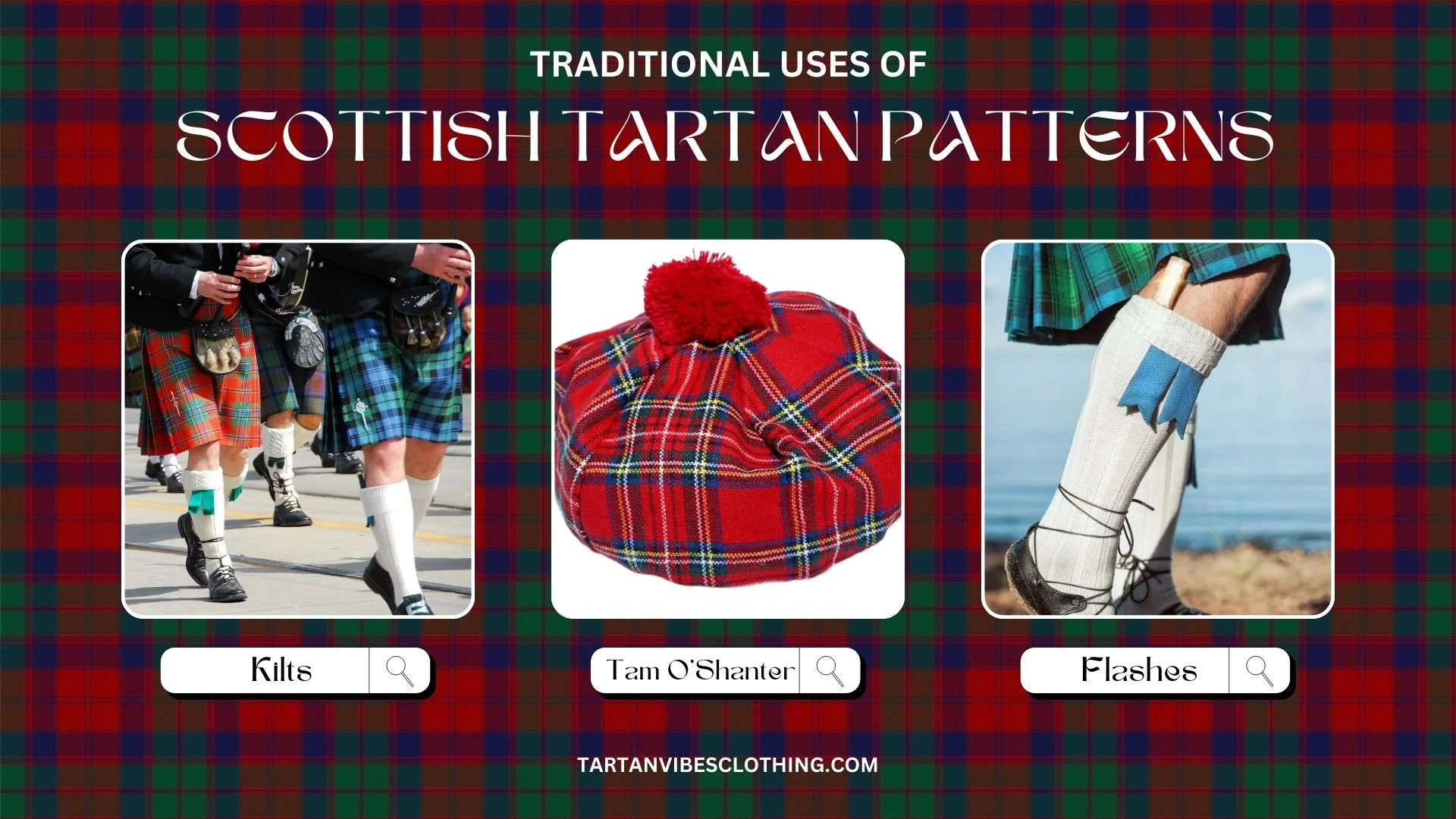
- Kilts: The iconic Scottish kilt, a knee-length garment, was traditionally made from tartan fabric, reflecting the wearer's clan affiliation.
Tartan Tam O'Shanter: The Tam O'Shanter is a traditional Scottish hat made from tartan fabric, often worn as part of the national dress.
Tartan Flashes: Tartan flashes are strips of tartan fabric worn at the top of the kilt hose (socks), held in place by garters. They serve a decorative and functional purpose, adding a coordinated touch to the kilt outfit and keeping the socks in place.
B. Scottish Tartan Patterns in Modern Fashion
In contemporary times, Fashion houses and designers have frequently drawn inspiration from Scottish tartan patterns, showcasing their interpretations on the runways of primary fashion weeks. These Scottish patterns have been reimagined and celebrated globally, from Alexander McQueen's iconic tartan collections to Vivienne Westwood's punk-inspired tartan designs.
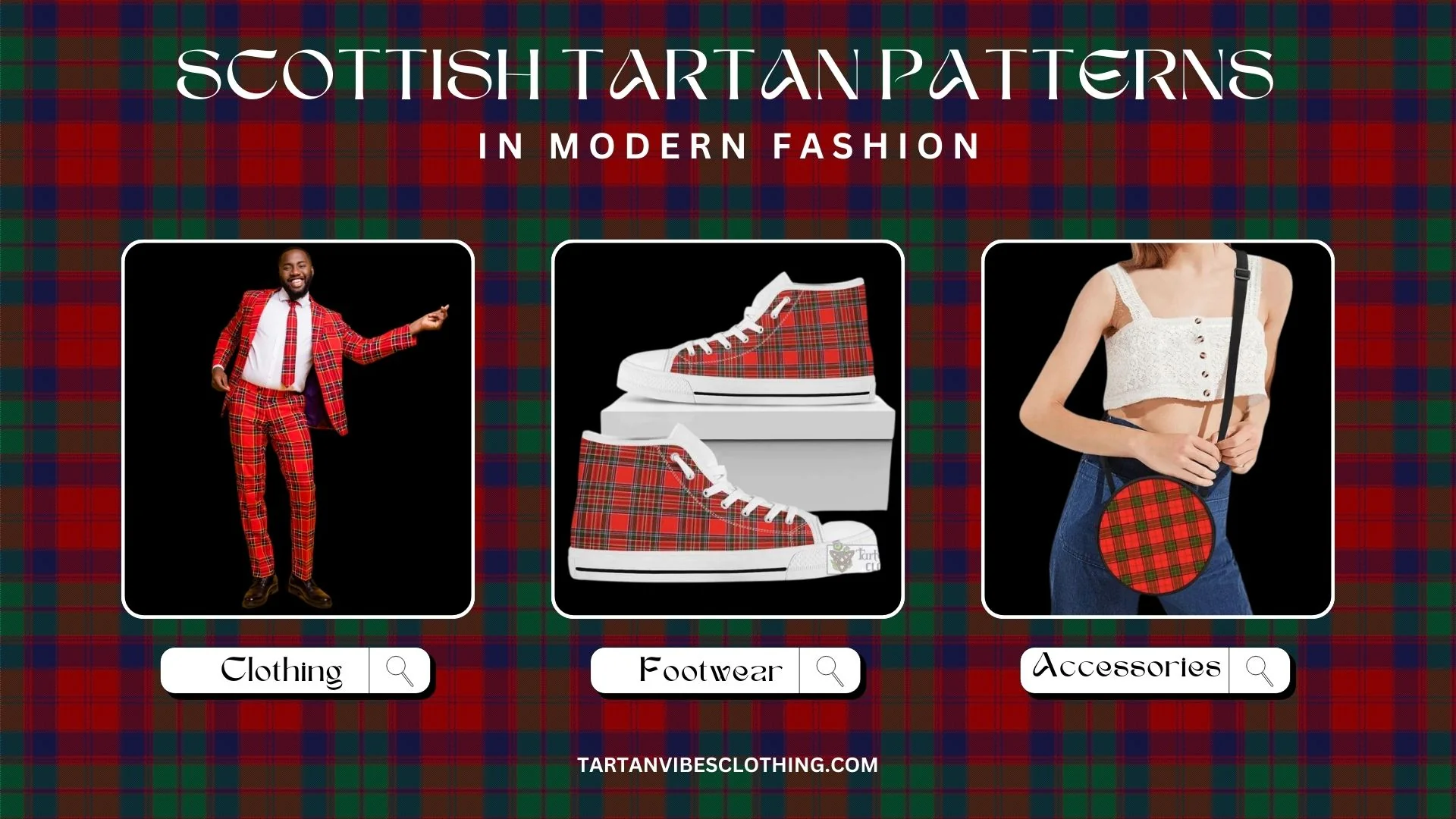
- Clothing: From trousers and skirts to jackets and dresses, Scottish tartan patterns have found their way into everyday fashion, adding a ruggedness and individuality to modern wardrobes.
Footwear: Scottish tartan patterns have adorned shoes, boots, and even sneakers, blending Scottish heritage with contemporary style.
Accessories: Tartan scarves, bags, and even jewelry have become popular accessories, allowing fashion-forward individuals to showcase their love for Scottish culture.
IV. Famous Scottish Tartan Patterns
1. Scottish Tartan Patterns: Royal Stewart Tartan
The Royal Stewart Tartan is closely linked with royalty and distinction. Its striking red base is enhanced by colorful blue, green, and yellow stripes, representing the Stewart Clan's noble heritage. This tartan has a rich historical background dating back to the 1800s when it became connected with the Royal House of Stewart. Nowadays, it serves as a symbol of Scottish heritage and is donned by individuals of all social classes, establishing itself as one of Scotland's most recognizable tartans.
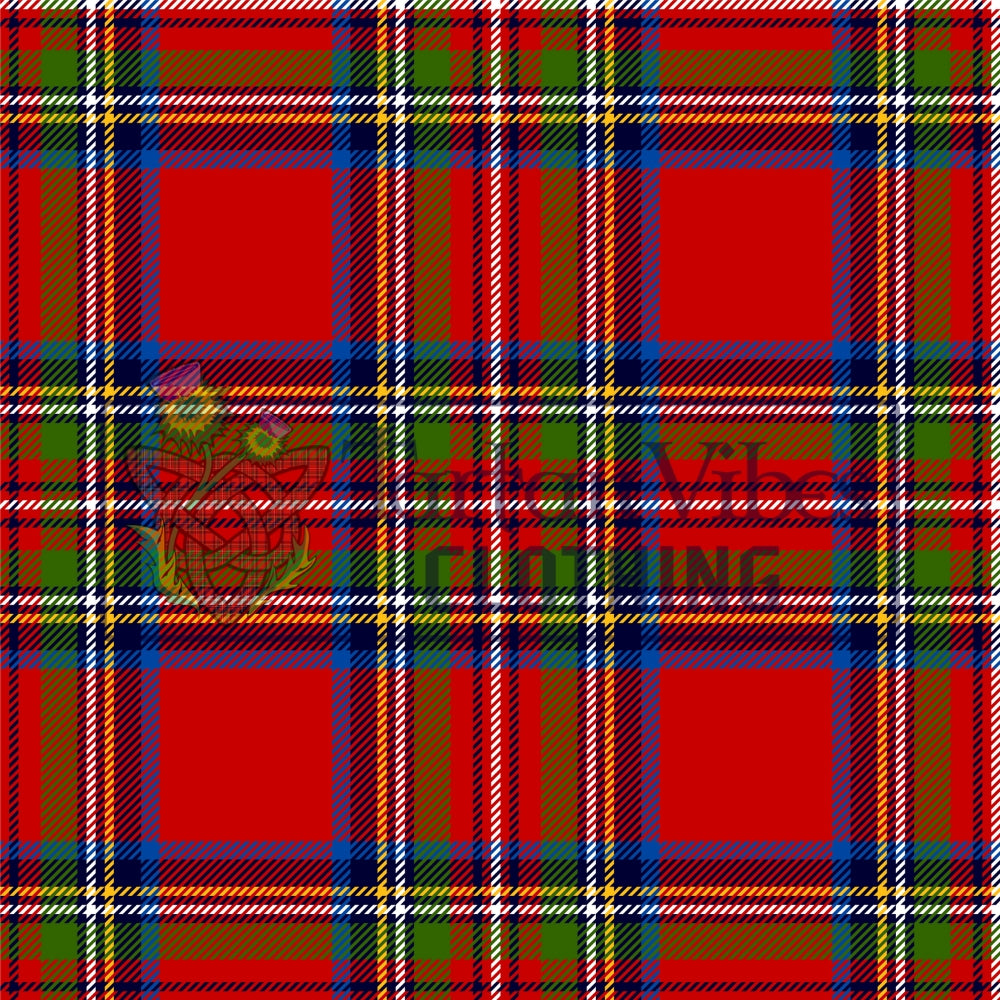
2. Scottish Tartan Patterns: Black Watch Tartan
The Black Watch Tartan also called the Government Tartan, features a bold dark blue and green design, with fine lines of black and red woven throughout. This tartan is rooted in the Black Watch attire, a famous Scottish army unit established in the 1700s, and represents resilience and customs. It is a significant emblem of Scotland's military history and is frequently worn proudly by former soldiers and their loved ones.
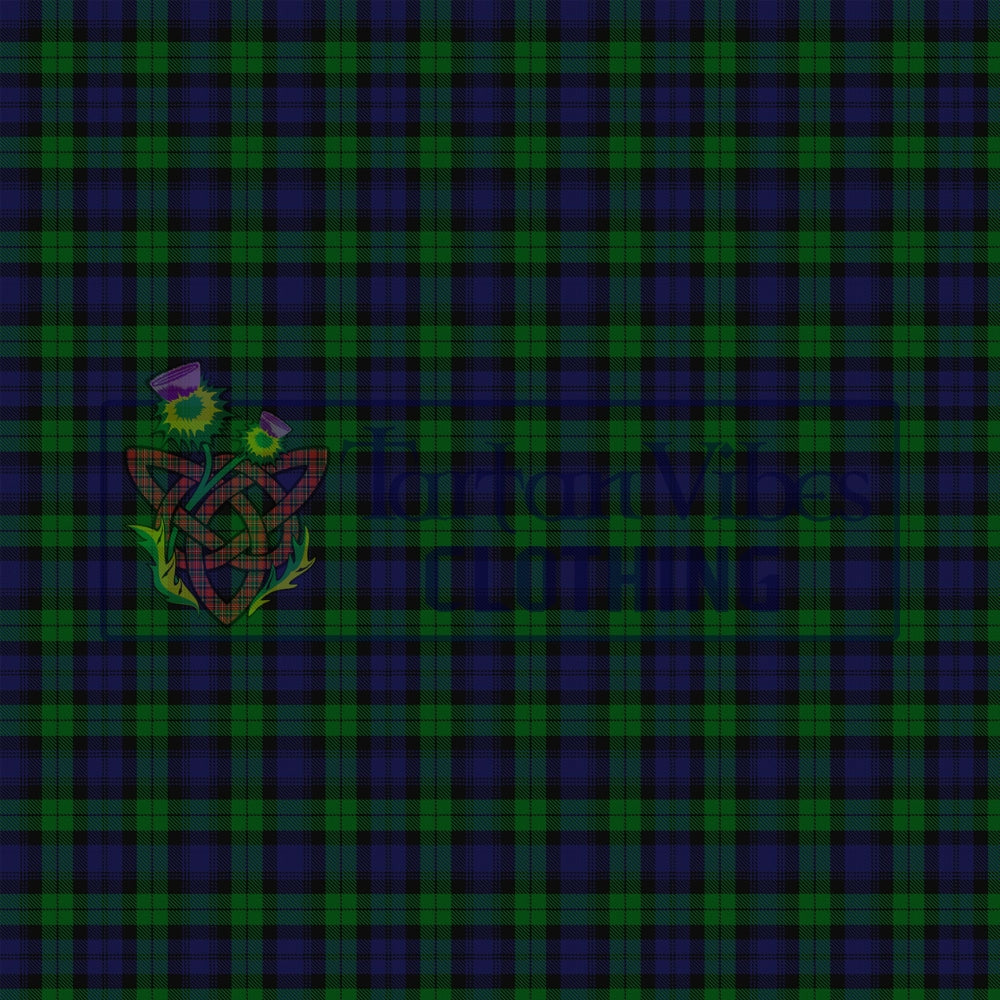
3. Scottish Tartan Patterns: MacLeod Tartan
The MacLeod Tartan symbolizes the enduring spirit and history of the MacLeod clan. Its unique design includes blue and green colors, reflecting the wild beauty of the Scottish Highlands. This tartan has a long-standing legacy closely connected to the customs and principles of the MacLeod clan, serving as a beloved emblem of their heritage and ancestry.
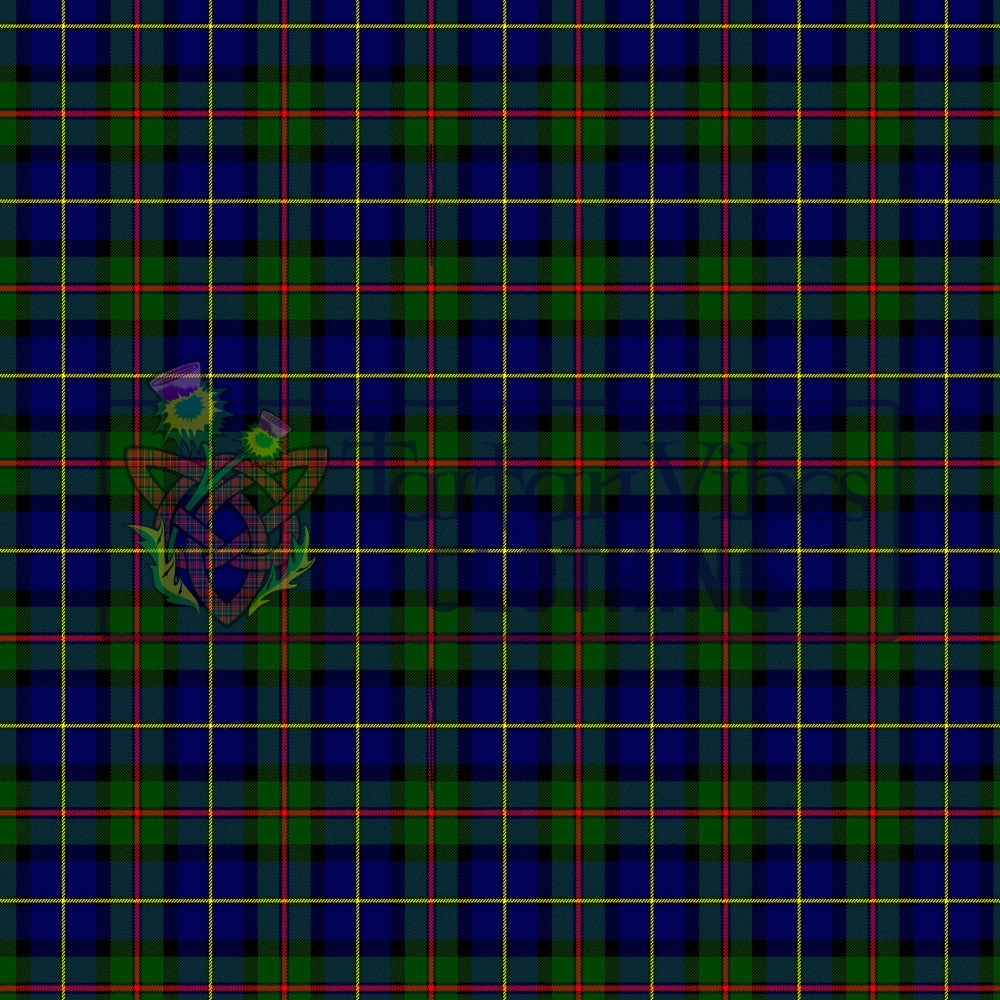
4. Scottish Tartan Patterns: MacKenzie Tartan
The MacKenzie Tartan vividly represents the long and eventful history of the MacKenzie clan. Its striking red and green colors bring to mind the beautiful Scottish landscape, and the detailed design symbolizes the clan's deep-rooted heritage and importance. Throughout history, the MacKenzie Tartan has been worn with pride by MacKenzies at various events, showcasing their strength and solidarity.
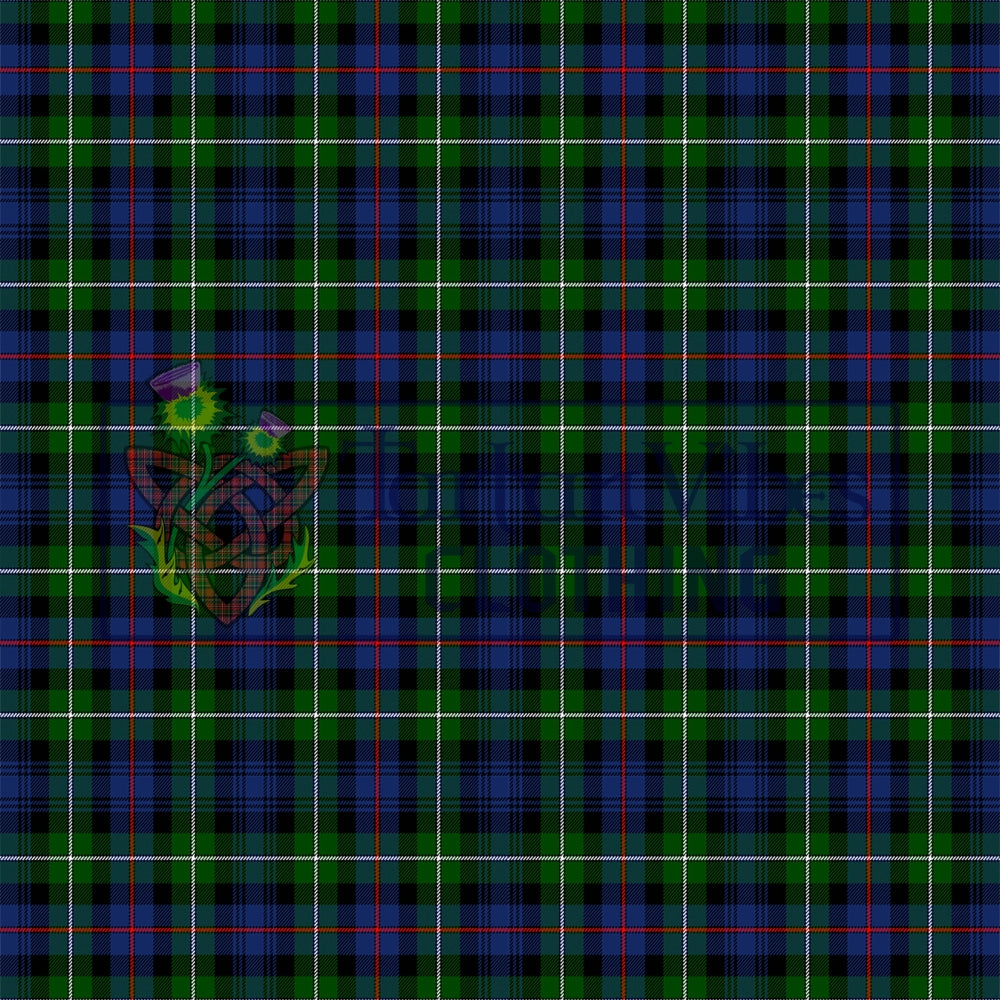
5. Scottish Tartan Patterns: Campbell Tartan
The Campbell Tartan represents the resilience and tradition of the Campbell Clan. The prominent blue colors represent faithfulness and determination, while the delicate touches of green and black honor the clan's origins in Scotland. For more than seven centuries, this tartan has been donned by Campbell fighters, chieftains, and influencers, acting as a potent symbol of their lasting impact.
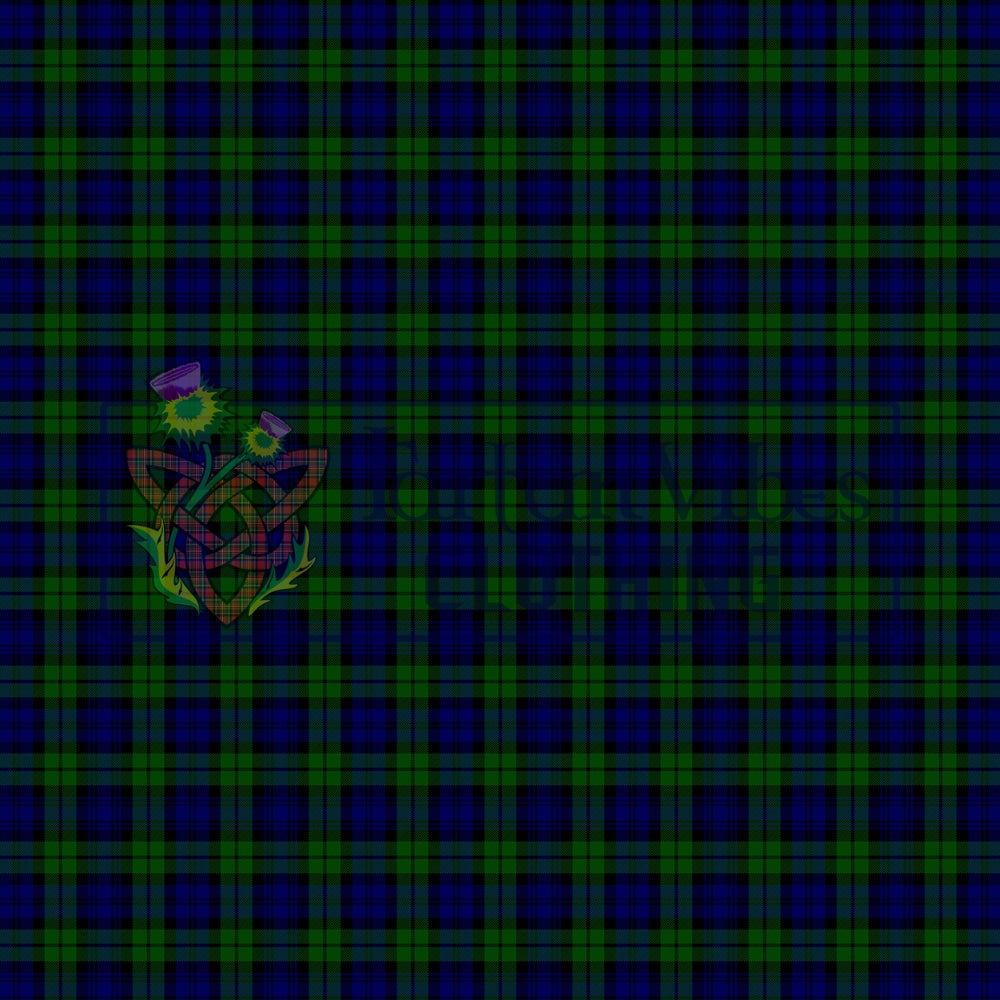
6. Scottish Tartan Patterns: Gordon Tartan
The Gordon Tartan vividly symbolizes the rich history of the Gordon clan. Its bold red, green, and yellow colors convey a feeling of energy and power, showcasing the clan's military skill and prestigious ancestry. Originating from the rugged terrain of Aberdeenshire, this tartan has been a source of pride for many generations of Gordons, representing their unwavering determination and strength.
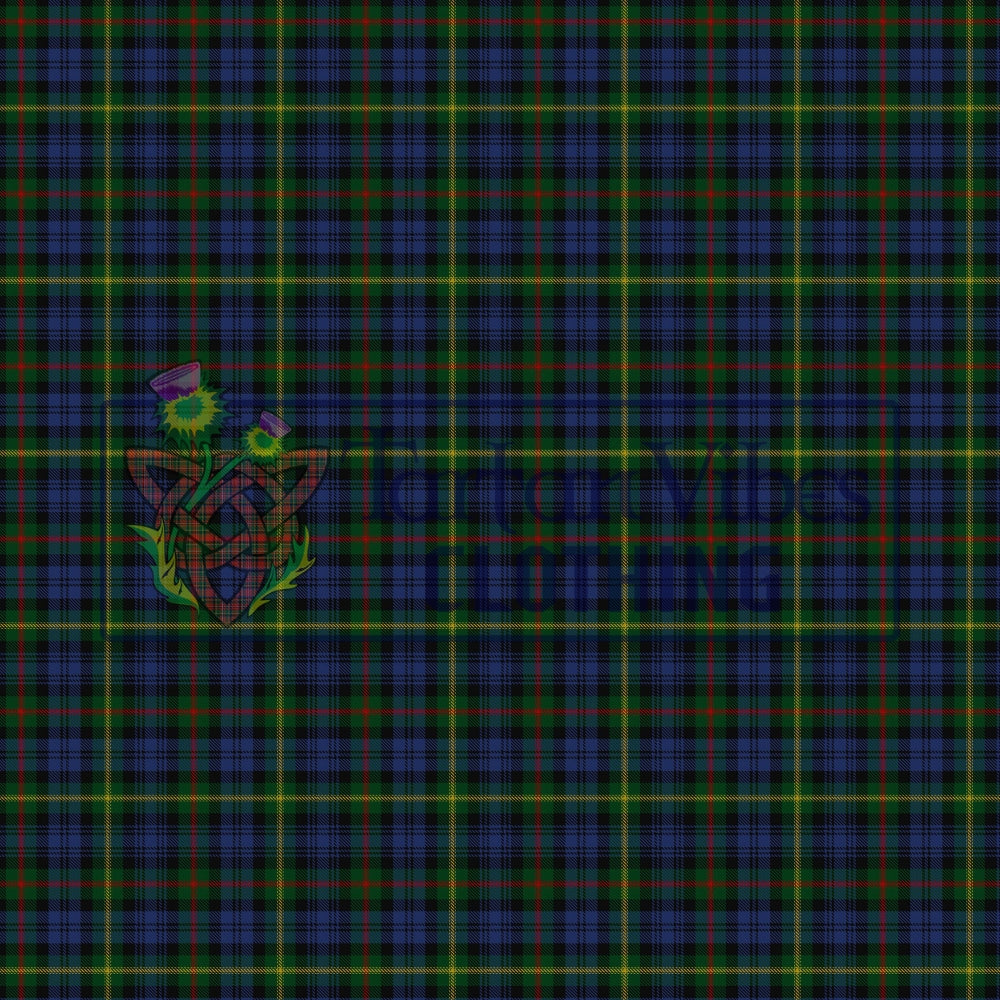
7. Scottish Tartan Patterns: Buchanan Tartan
The Buchanan Tartan boldly represents the heritage and pride of the Buchanan Clan. The distinctive black and yellow design symbolizes the clan's heraldic emblems, bringing images of old castles and historic battles to mind. Having been around for centuries, this tartan is a potent symbol of the Buchanan clan's strength and perseverance in challenging times.
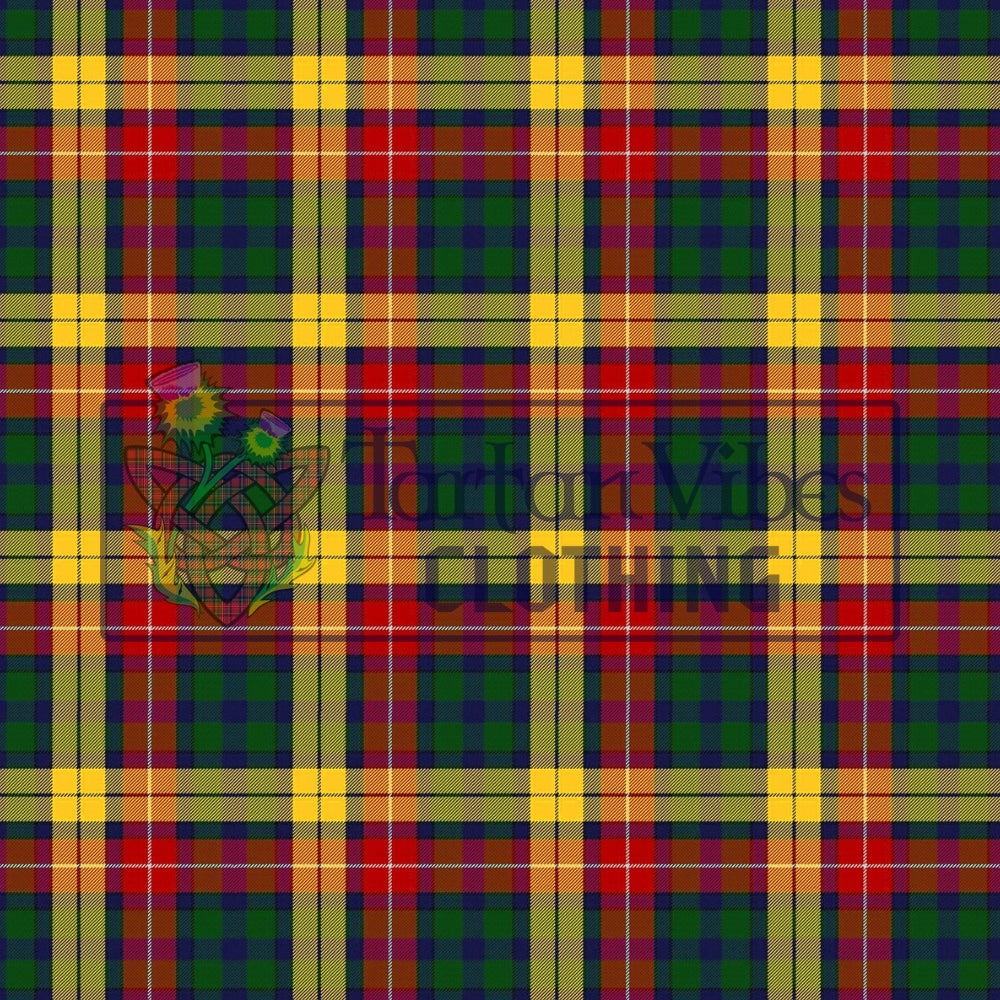
8. Scottish Tartan Patterns: MacDonald Tartan
The MacDonald Tartan represents the rich history of the MacDonald Clan that has endured through generations. The bold red, green, and yellow colors reflect the Scottish Highlands' natural beauty that has influenced the clan's customs and experiences. This tartan, with a history spanning more than a millennium, symbolizes the MacDonald clan's strong sense of freedom and deep-rooted admiration for their Scottish ancestry.
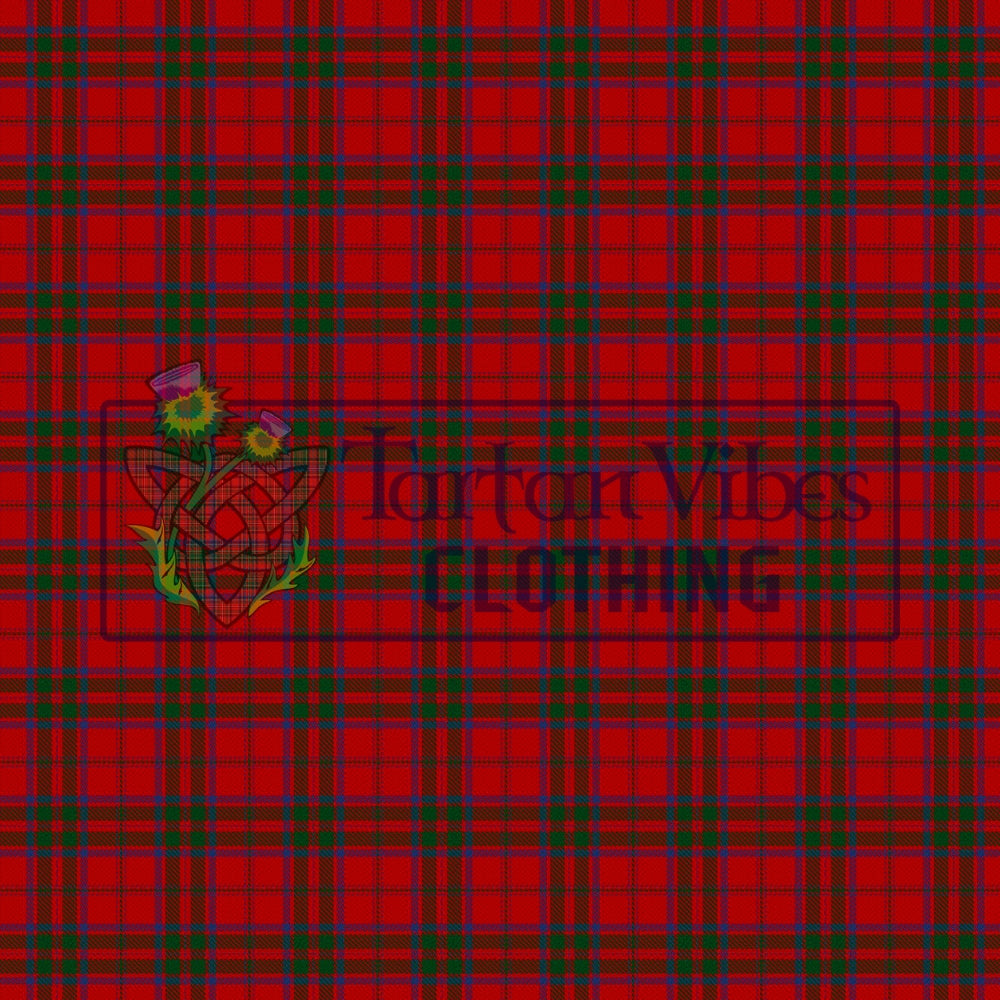
9. Scottish Tartan Patterns: Douglas Tartan
The Douglas Tartan represents the proud heritage and military skill of the Douglas clan. Its vibrant red, green, and black design mirrors the clan's coat of arms and rich past. Throughout history, from medieval Scottish battlefields to the political centers of Edinburgh, this tartan has been worn with pride by countless Douglases, showcasing their lasting impact.
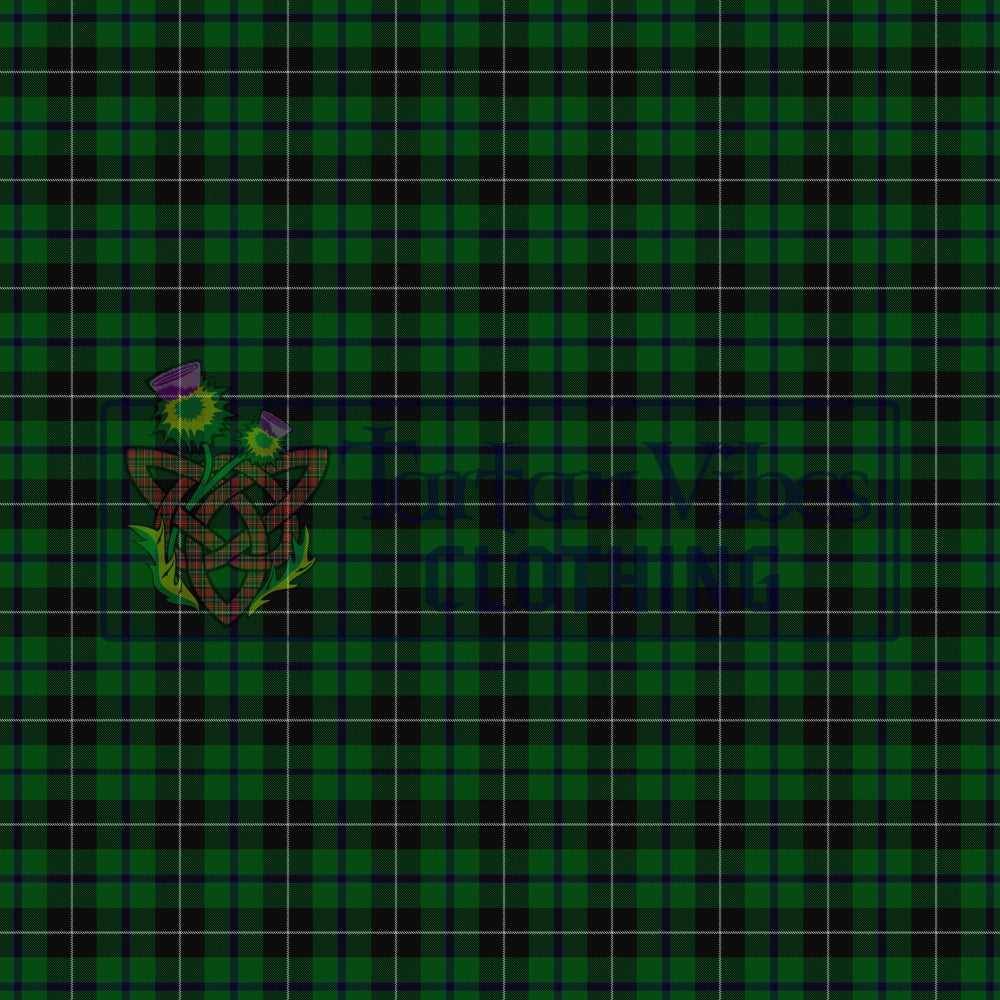
10. Scottish Tartan Patterns: Fraser Tartan
The Fraser Tartan symbolizes the enduring strength and resilience of the Fraser clan throughout time. Its vibrant red, green, and blue colors represent the clan's Highland roots and fierce warrior ethos. This tartan, deeply rooted in tradition, has been a proud garment worn by Fraser warriors and leaders for generations, signifying their steadfast commitment and dedication to Scotland.
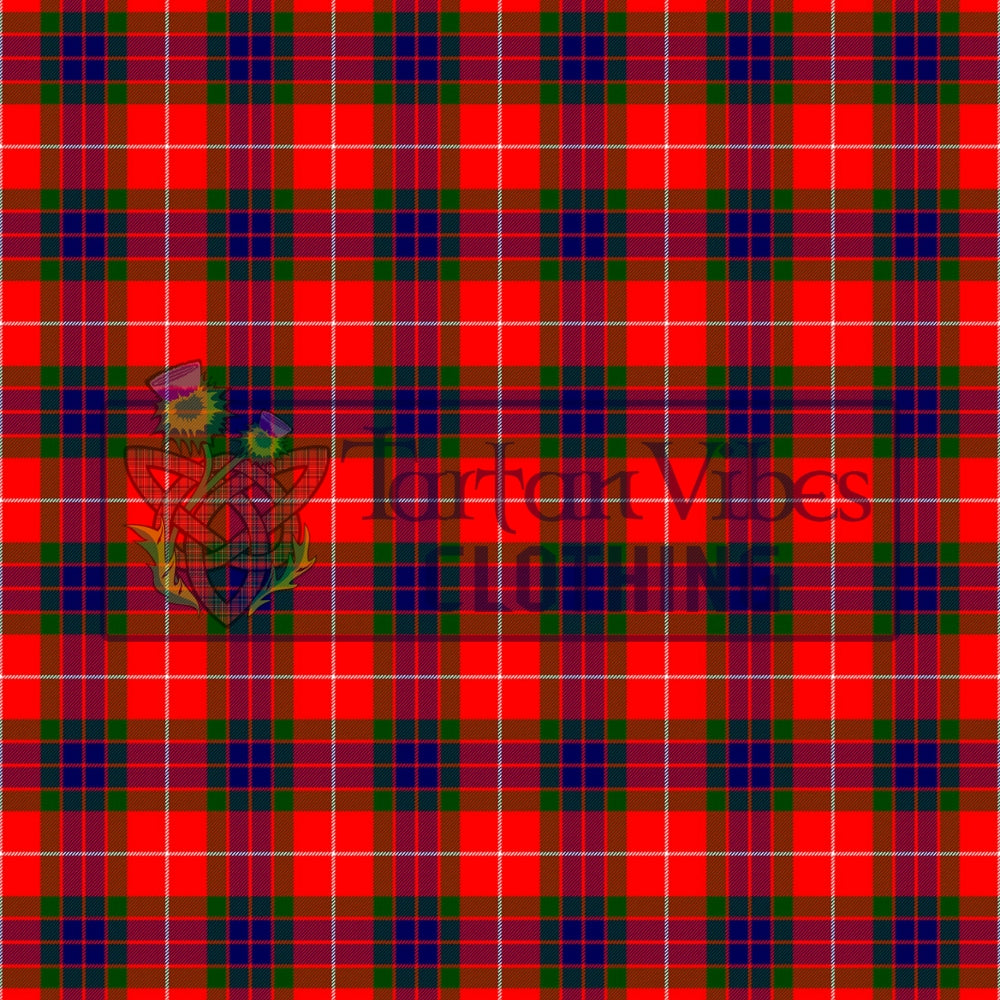
V. How to Wear Scottish Tartan Patterns
Incorporating Scottish tartan patterns into one's wardrobe is a fantastic way to showcase personal style and embrace Scottish heritage. Here are some tips for wearing tartans with confidence:
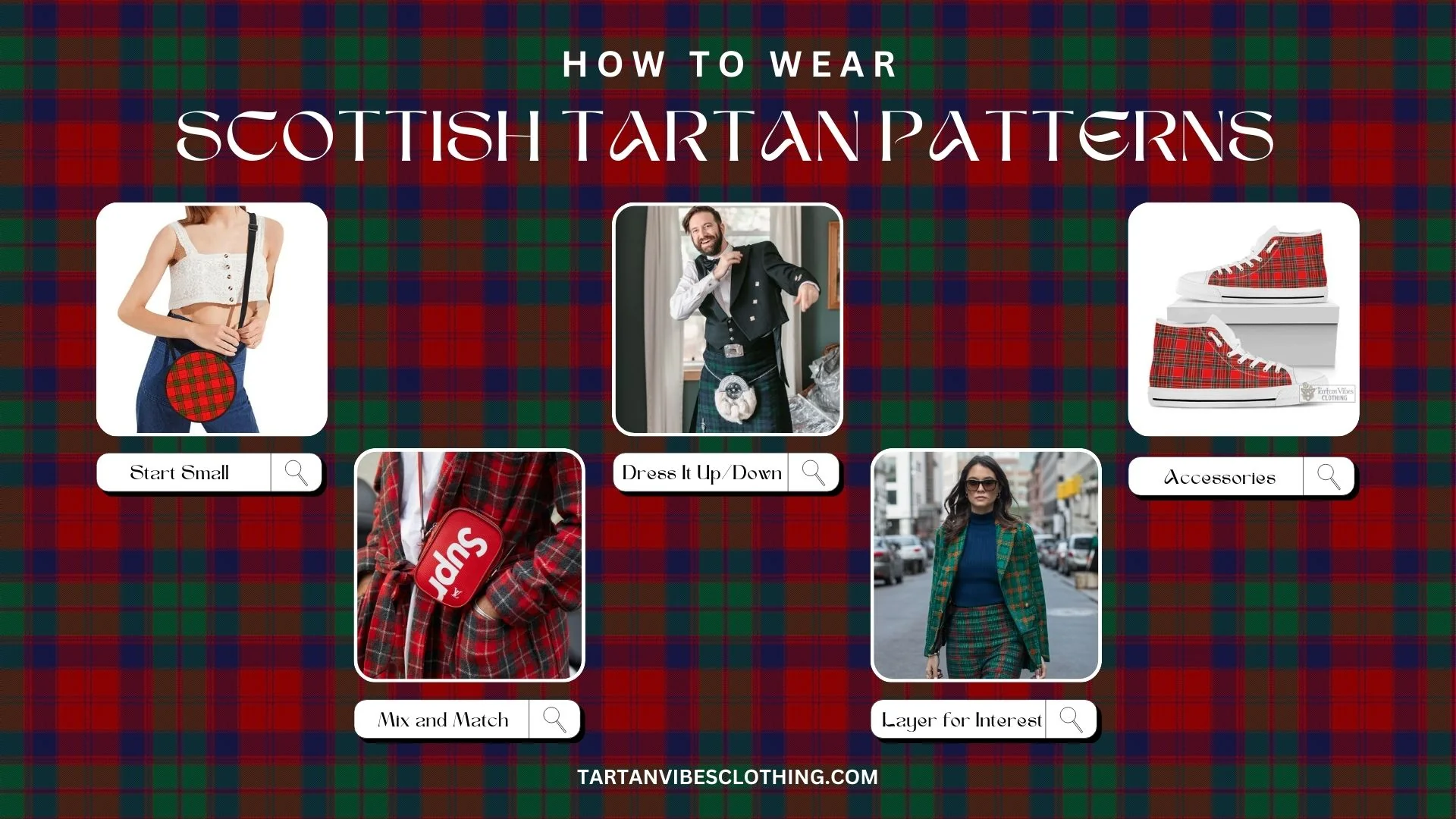
A. Start Small
For those new to wearing Scottish tartan patterns, starting with smaller accessories like scarves, ties, or pocket squares is advisable. These subtle additions can help you get accustomed to the bold patterns before diving into more oversized garments.
B. Mix and Match
Tartans of Scotland patterns can be paired with various colors and styles, allowing endless possibilities. Consider mixing tartans with solid colors, denim, or complementary patterns for a unique and stylish look.
C. Dress It Up or Down
The versatility of Scottish tartan patterns allows you to dress them up or down depending on the occasion. Pair a tartan skirt or dress with a blazer and heels for a formal event, or opt for tartan trousers and a simple T-shirt for a casual, laid-back look.
D. Layer for Interest
Layering different tartan pieces can create depth and interest in your outfit. For example, pair a tartan blazer with a complementary tartan scarf or a tartan shirt with a solid-colored jacket.
E. Embrace Accessories
Remember to consider the impact of tartan accessories. A tartan bag, shoes, or brooch can add a touch of Scottish flair to any ensemble, allowing you to showcase your style and appreciation for Scottish heritage.
📜 Please also see more of The Most Popular Tartans: Explore Scotland's Iconic Patterns
VI. Conclusion
Scottish tartan patterns have journeyed from the Scottish Highlands to the global fashion stage, influencing everything from traditional attire to modern streetwear. Their unique blend of history, culture, and aesthetic appeal makes tartan a timeless and versatile element in the fashion world. As tartan continues to evolve, its influence on fashion remains profound and enduring.
Frequently Asked Questions
What is the most famous Scottish tartan?
The Royal Stewart tartan is arguably the most famous, associated with the British royal family, and widely recognized worldwide.
How is tartan different from plaid pattern?
Tartan refers to the specific plaid patterns historically associated with Scottish clans, while plaid is a broader term used to describe similar patterns regardless of origin.
Where can I buy authentic Scottish tartan?
Authentic Scottish tartan can be purchased from specialized retailers in Scotland and online from reputable sellers who source their fabrics from Scottish mills.
What are the rules for tartan patterns?
Tartans are almost always symmetrical, with the pattern (known as the 'sett') repeating in the same sequence both vertically or length-wise (the 'warp' on a weaving loom) and horizontally or width-wise (the 'weft' on a weaving loom). The colors visually mix into a composite shade where they cross.
Can you wear tartan if I'm not Scottish?
Yes, you can wear tartan if you're not part of a clan. If you're unable to find your family tartan or don't have any Scottish ancestry at all, you can still wear tartan.












